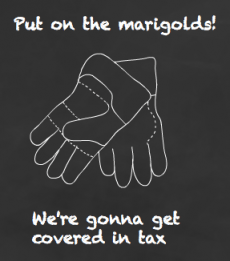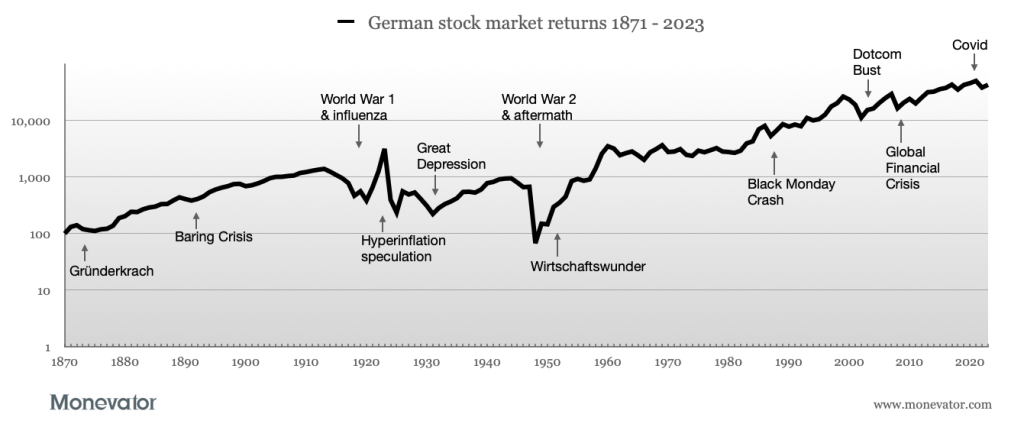
I have always found it hard to keep a grip on the pension drawdown options. There are so many fiddly yet peskily important details to forget about.
So today we’ll try to capture all the crucial drawdown details in one place for future reference.
Let’s take it one step at a time…
What is a drawdown pension?
Going into pension drawdown is one of the options you have when taking money from a defined contribution pension of some description.
Defined contribution pensions have more aliases than a criminal mastermind, including:
Personal pension
Workplace pension
Occupational pension
Stakeholder pension
SIPP
Master trust pension
There’s even more out there if you look for them!
Meanwhile, a defined contribution pension is best described as not a defined benefit pension.
A defined benefit pension offers you a guaranteed income for life.
A defined contribution pension does not, and so is not as good. It is however typically cheaper and less burdensome for a company to offer to its workers than a defined benefit jobbie. Which is why defined benefit pensions are nowadays rarer than unicorn milk in the private sector.
If you’re under 60 and you work in the private sector, you most probably have a defined contribution pension.
This article focuses purely on your options if you hold a defined contribution pension. Mostly because that’s the type I have too – and because I have to draw the line somewhere.
I’m also going to assume that the earliest you can retire is age 55 (going up to 57 from 6 April 2028) and that you don’t have any other pension bells and whistles like lump sum protections and the like.
We can investigate the exceptions and edge cases together in the comments.
Pension drawdown: take a step back to go forward
When you crack open your pension pot, you can take some of your savings as tax-free cash (TFC)1 – which is every bit as good as it sounds.
The rest of your income needs are serviced by taxable cash.
There are three main options for releasing the taxable wedge from your pension, and we’ll come to those in a sec.
How much tax-free cash?
You can take up to 25% of your pension savings as tax-free cash.
That 25% is currently capped at £268,275.2
You can take your entire tax-free cash allowance in one go, or in stages. It’s up to you.
Options for your taxable pension savings
For every £1 you take in tax-free cash, you have six months to decide what to do with the other, potentially taxable £3:
Pension drawdown – you can take a flexible income from your pot while the rest of your funds are typically left invested.
Buy an annuity – you hand over a sizeable chunk of your loot to an insurance company. It then pays you a regular income for as long as you wear this mortal coil.
Cash grab – you can take your entire pension as cash NOW. Or some of it. This is the Lamborghini option. Or a Vauxhall Corsa in my case. HMRC will send you a birthday card if you go down this route. Sorry, that should read enormous tax demand.
Have it your way – mix-and-match the three options above, in any combination you like, Burger King-style.
Your provider may not offer all or even any of these options. In which case you can transfer your pension to someone who will.
Okay, I’d love to talk about pension drawdown now. But, to do that, I’ve gotta get some more confounding terminology out of the way…
Crystallised versus uncrystallised pension
There’s no escaping this.
Your pension stands astride a boundary. Not the line betwixt good and evil but between uncrystallised and crystallised.
Uncrystallised pension savings refer to pension assets that are not ‘in play’. They remain invested in your pension pot, poised in a superposition. All options are still on the table, because you haven’t yet entangled them in a withdrawal event. [Editor’s note: Great thinking @TA – using a quantum mechanics metaphor to simplify pension chat!]
Crystallised pension savings are assets that are ‘in play’ because you’ve withdrawn money.
For example imagine you withdraw 10% of your £500,000 pension as tax-free cash.
This crystallises £200,000 like so:
£50,000 in tax-free cash
A further £150,000 of pension savings that require you to select from the options described in the previous section. (This is the taxable £3 bound up with every £1 of tax-free cash you took).
To recap: your remaining £150,000 of crystallised funds can be put into drawdown, some portion can be used to buy an annuity, or you can stuff the lot into a holdall before going on the run from HMRC.
All that means that £300,000 of our original £500,000 pension is still uncrystallised. And 25% of that £300,000 can still hatch as tax-free cash.
Crystal clear-ish
Perhaps the best way to think of the metamorphosis between uncrystallised and crystallised pension is that income is taken from the crystallised portion and may be subject to income tax at your marginal rate.
Lots of sources describe crystallising pension assets as ‘cashing in’ your pension. This doesn’t make sense to me. You can leave crystallised funds invested and untouched for the rest of your life if you want.
Importantly, when you crystallise an amount, you lose your right to its associated 25% tax-free cash if you don’t take it at the time.
Incidentally, your pension is not subject to Inheritance Tax – no matter which state it’s in.
Pension drawdown rules
At last! With that foundation course out of the way, we can move on to the actual pension drawdown rules.
Pension drawdown is extremely flexible, subject to the confines of your provider’s scheme.
If you take 25% of your pension pot as tax-free cash then the remaining 75% can be put into drawdown as discussed.
From there, you can start taking an income from these crystallised funds. As frequently as monthly if your broker’s particular platform is game.
That’s one way of doing it.
However a better way for many people is to periodically take tax-free cash in chunks. For example, in amounts that don’t exceed your annual ISA allowance, so can then tuck the cash away in an ISA where it can continue to grow tax-free.
This approach is known as phased drawdown or partial drawdown, because every tax-free withdrawal also crystallises additional assets in the 3:1 ratio described above.
Phased or partial drawdown
Phased drawdown isn’t a special pension drawdown mode you need to unlock. It’s just a name given to drawing down in stages, as opposed to taking all of your tax-free cash in a one-er.
Here’s an example of phased drawdown:
I’ve streamlined this example. There’s no need to crystallise the same amount every year with phased drawdown.
I’ve not stuck to my sustainable withdrawal rate in this example either. And it illustrates a mild investing nightmare, as the portfolio has gone sideways for two years on the trot.
Remember that any amount of the £30,000 crystallised segment can be taken as income too (or none of it), but these withdrawals are subject to income tax once you’ve smashed through your personal allowances.
Phased drawdown has two advantages versus the other method of withdrawing from your pension in stages: the uncrystallised funds pension lump sum (UFPLS).
Firstly, phased drawdown doesn’t trigger the Money Purchase Annual Allowance (MPAA) rules. Just so long as you don’t take an income from your crystallised funds.
In other words, you won’t limit tax-relief on your future pension contributions if you can live off your tax-free cash and/or other income sources for a time.
Secondly, tax-free cash from drawdown isn’t restricted to 25% of the standard limit if you have pension protections that exceed that limit.
Capped drawdown
Capped drawdown was a more restrictive set of pension drawdown rules that applied before the shackles were loosened.
You can’t choose capped drawdown as an option anymore. You can decide to remain on it though.
Pension drawdown tax
Any money withdrawn from your pension drawdown assets (aside from your tax-free cash) is subject to income tax as normal.
These withdrawals count as non-savings income that is taxed in the same way as wages from a job.3
The first £12,570 taken from your pension drawdown balance is tax-free due to the personal allowance. All the usual tax bands and rules apply thereafter.
Treat the family by dying before age 75
If you die before age 75 then any beneficiary can withdraw cash from your drawdown pension tax-free.
After age 75, drawdown payments are made at the beneficiary’s marginal income tax rate. The same is true for annuity payments.
Obscure exception 1: Income tax is payable at the beneficiary’s rate if you die before age 75, and payments are taken from uncrystallised funds that are not designated for drawdown within two years of the scheme administrator knowing about your death.
Obscure exception 2: Income tax is payable at the beneficiary’s rate if you die before age 75, and a lump sum is taken beyond two years of the scheme administrator knowing about your death.
Another obscure exception – number 3: It’s not clear how lump sums from uncrystallised funds in excess of the old Lifetime Allowance will be taxed, if you die before age 75.
Obscure exception 4: Income tax is payable at 45% on lump sums paid into a trust, if you die after age 75.
Note: Taking income from an inherited pension does not trigger the Money Purchase Annual Allowance.
Emergency tax on pension drawdown payments
Tax on pension withdrawals is deducted by your broker/scheme provider using PAYE.
Your first drawdown payment (or any that are deemed to be ad hoc) is likely to be taxed using an emergency tax code rather than your actual rate.
The emergency tax rate assumes you’ll receive the same amount of income every month.
For instance if you take £20,000 (above and beyond your tax-free cash) to cover the year, HMRC will assume you’re living it large on a £240,000 annual income.
Obviously paying tax at that rate is going to take a massive bite out of your £20,000 income apple. It could be months before you’re refunded by HMRC.
It’s a patently ludicrous situation.
Deescalation
I’d recommend having a conversation with your broker about how you can duck the emergency tax bullet – but I have a feeling it’s unavoidable.
Plenty of providers offer material on how to reclaim overpaid tax. But they’re more or less silent on how to prevent the whole palaver in the first place.
Perhaps some Monevator readers have ideas? Because I’ve only come across a couple of useful tips:
If you plan to take a regular drawdown income (I think regular means monthly in this context) then ensure your first taxable payment is only for a small amount – such as £100. The emergency tax rate will apply to this amount and HMRC will then issue updated tax codes that adjust for your subsequent, larger payments throughout the tax year.
This way, HMRC is effectively reclaiming the correct amount of tax from you. There’s lovely!
If you’ve been issued a P45 for the same tax year as your first drawdown payment then ask your broker if that will enable them to apply an accurate tax code from the start.
Personally, I planned to withdraw once a year rather than monthly but I’m doing a rapid rethink in the face of this PAYE nonsense. By the looks of things, I’d have to reclaim tax every time for this kind of ‘ad hoc’ payment.
I think what I’ll do is sell down enough bonds and equities to cover myself for a year. I’ll park the cash in my SIPP – possibly using a money market fund if my broker’s interest rate is rubbish. Then I’ll take 12 equal monthly payments from that cash balance.
Uneven or additional payments can be dealt with by HMRC adjusting the tax code from time-to-time.
Reclaiming tax
Just for fun, HMRC have three different tax forms on the go for reclaiming tax on pension withdrawals. Choose from:
P55 – if your withdrawal hasn’t emptied this particular pension and you don’t intend to take any more payments from it this tax year
P50Z – if you’ve drained this pension dry and aren’t working
P53Z – you’ve tapped out this pension and are still working
When you plan to take multiple withdrawals from a pension then HMRC will revise your tax code later in the year for under/overpayments. Thus we’re spared another tax form.
Pension drawdown charges
You shouldn’t have to pay anything for drawdown services these days.
See the SIPP row / Fee notes column of the Monevator broker table to find drawdown and UFPLS fees.
Fidelity, AJ Bell, Aviva, and Hargreaves Lansdown all charge nothing for drawdown. And they cap their platform charges at a reasonable rate if you choose an ETF-only portfolio.
Small pots
The small pots rule enables you to empty three defined contribution pensions worth up to £10,000 each without triggering the MPAA limit that caps tax relief on future pension contributions.
Otherwise, the small pots rule works exactly like the cash grab option we described earlier:
You can withdraw all the cash from any of your pensions in one go
Up to 25% is available as tax-free cash, so long as you don’t break through your total lifetime tax-free cash ceiling
The remaining funds are subject to income tax as usual
Check with your pension provider to ensure your scheme is eligible for the small pots rule.
Because this is an ad hoc payment, you may well pay the wrong amount of tax initially, as described in the emergency tax section.
Pension Wise
Finally, if you would welcome advice on how to make the most of your pension then know that you are entitled to a free Pension Wise advice session.
Doubtless even grizzled Monevator mavens would benefit from the chance to clarify things. You can also attend an appointment on behalf of a family member or a friend.
Given the life-changing nature of these decisions, I’m very glad that Pension Wise exists to offer a guiding hand. Even if only for 60 minutes.
As for us, that’s it for our tour of the pension drawdown rules.
Complexity seems to be the necessary by-product of the UK’s flexible pension system. I hope this piece goes some way to clearing up the fug surrounding it.
But let us know what we’ve missed in the comments below.
Take it steady,
The Accumulator
Also known as the pension commencement lump sum or PCLS.Unless you’ve already locked-in a higher lump sum or lifetime allowance limit.Though pension withdrawals do not count as earnings that determine how much you can contribute towards a pension.
The post Pension drawdown rules: what are they? appeared first on Monevator.



